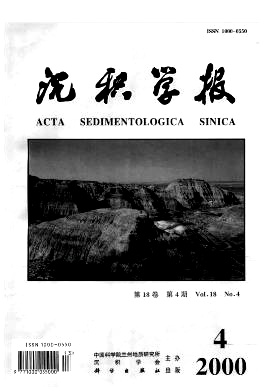Evolution of Porosity in the Process of Sinian Dolostone Diagenesis in Southwest Sichuan
- Received Date: 1999-04-07
- Rev Recd Date: 2000-01-18
- Publish Date: 2000-08-10
-
Key words:
- Sichuan Basin /
- Sinian /
- dokostone /
- diagenesis /
- evolution of porosity
Abstract: In South China, especially in Southwest China, Sinian dolostone is widely distributed and with great thickness,which is of favorable potential of oil/gas accumulation. But the formation is very old in geologic age and complicated in diagenesis, which results in the uneven distribution and apparent inhomogeneity of the reservoirs. In the area, the Sinian dolostone reservoirs are dominantly concentrated at the top and middle parts of the Dengying Formation, and pore spaces are completely dominated by pores, vugs and fractures with secondary origination.Study indicates that the formation and evolution of the porosity are controlled by diagenesis.The destructive diagenesis,which is unfavorable for the formation and evolution of porosity,are mainly compression, cementation of primary porosity and filling of chemical prceipitation in secondary porosity, and the constructive diagenesis,which stimulates the formation and resolution of porosity,include recrystallization, dissolution in hypergenesis and in burial diagenesis. Compression is the main factor of closing all the primary porosity in fine dolostone; the primary intergranular porosity in grain dolostone and algae bound dolostone and algae framework porosity were eliminated after cementation of three phase dolosparite with the shapes of fiber, silt fine crystal and coarse crystal, and only a little residual primary porosity was preserved.The chemical fillings in the secondary pores, vugs and fractures are the cause of the porosity being not able to be preserved. There are mainly three phases of chemical fillings.The first phase is characterized by fiber like dolomite with the shapes of grape lace, the second one takes shape of fine to course dolomite, and the third one megacrystal dolomite. They may reduce the secondary porosity by 20%~80%, or up to 100% locally. The cements and chemical fillings precipitated in different diagenesis environments differ from each other not only in shapes of the crystals occurrence and succession of formation,also in geochemical features. Recrystallization occurred in burial diagenesis is apparent in the dolostone with no or little insoluble residues.The recrystallization results in the dolomite crystals in original rocks growing bigger and more automorphic, and the outcome is that total porosity in original rocks is not increased,but the effective porosity and permeability are increased, which is favorable for the passing of soluble formation water during buried diagenesis.Moreover,a good basis is laid for burial dissolution and formation and evolution of porosity are stimulated. Dissolution is the main factor of forming the secondary porosity, the hypergenesis dissolution at the end of Sinian was related to Tong Wan Movement. The dissolution developed not only lots of inter breccia pores, vugs and residual grape lace like vugs, but made the porosity concentrate in the range of 5 to 75 meters under weathering boundary. There are two phases of dissolution in burial episode, the first one happened in mature stage, and the second one in over mature stage of organic matters,dissolution is tightly bound to the process of maturing and evoluting of organic matters within the formations. To sum up, the porosity in Sinian dolostone reservoirs in Southwest Sichuan is the end product of natural process of sedimentation, diagenesis and tectonics in as long as 0.6 billion years. Diagenesis turned the dolostone deposits dominated by primary porosity into the dolostone reservoirs completely dominated by secondary porosity.
| Citation: | WANG Xing zhi, MU Shu guang, FANG Shao xian, HUANG Ji xiang, HOU Fang hao. Evolution of Porosity in the Process of Sinian Dolostone Diagenesis in Southwest Sichuan[J]. Acta Sedimentologica Sinica, 2000, 18(4): 549-554. |






 DownLoad:
DownLoad: